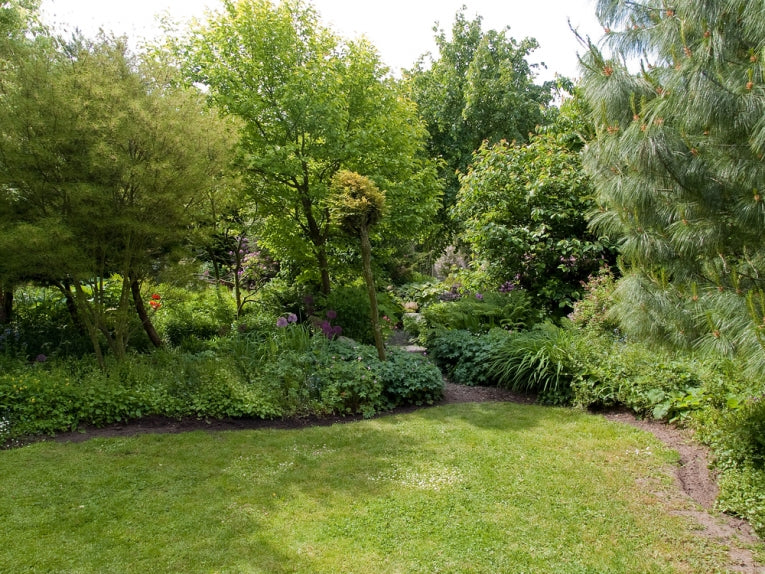Outdoor spaces, like grassy yards or cultivated gardens, are by definition "green." Having a green landscape at your house or office building is a small step towards being more sustainable and supporting the environmental conservation movement. While you may not consider your outdoor space in this light, you do, hopefully, enjoy it for what it is - a simple green space that is your own.
However, when you realize its greater potential, you can see what else your yard has to offer. Your yard and gardens can be landscaped into an energy efficient space. When designed well, your yard actually has the capability to improve your home's use of energy, as well as, be a space you enjoy.
Plant Deciduous Shade Trees
It is a simple, common knowledge concept: a shady spot is cooler than a spot in the sun. If you want a more energy efficient home, make the house be in "a shady spot." Planting shade trees on the side of the house that gets the most sun easily does this. This can lower your power bill by multiple percentiles because less sunlight will enter, therefore ensuring your air conditioner does not have to work as hard to cool down the space. To be truly energy efficient, opt for deciduous shade trees. In the winter, the trees will be bare of leaves and the winter sun will come inside; your heater will not have to work as hard.
Utilize Wind Blocking Trees
If your home bares the brunt of a decent amount of wind, you are losing energy. Modern homes are much more resistant to outside temperature's effects than older homes, but wind can still push cold air into both. Identifying the typical direction of wind and design your landscape accordingly. Large trees planted to block the wind will keep the cold chills from reaching your home.
Mulch Your Flower Beds
Watering flowerbeds is a necessity - all plants need water, even if they are hearty. However, there are steps you can take to increase plants' abilities to go longer without water and be resistant to heat. Natural organic mulches, like wood chips, are one of the best ways to go about this. Place mulch around the roots of your trees and flowers in beds. Mulch lowers the ground temperature and holds water in.
Cultivate Drought-Resistant Plants
Another way to save water, simply, is to plant drought-resistant plants. These plants are not just a plus when you head on a weeklong summer vacation; they will save you money year round, especially if you live in a drought prone area. A garden planted with drought-resistant plants is a truly eco-friendly landscape.










